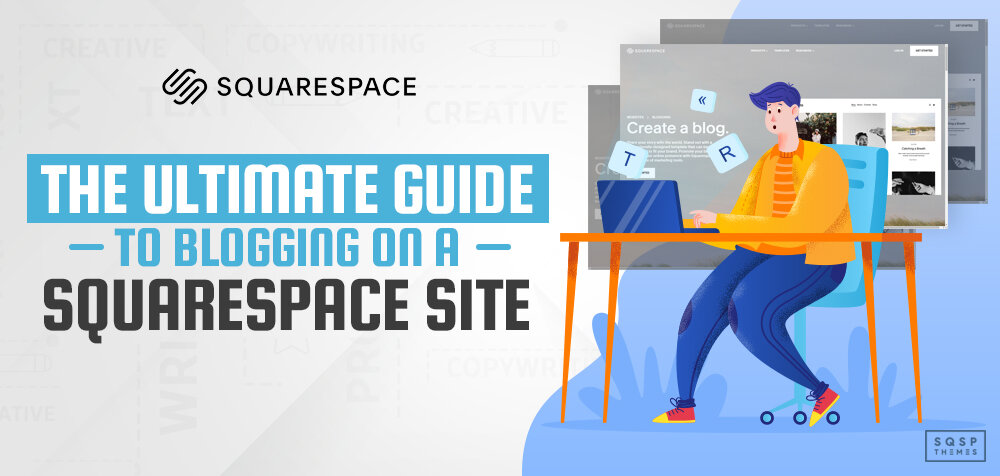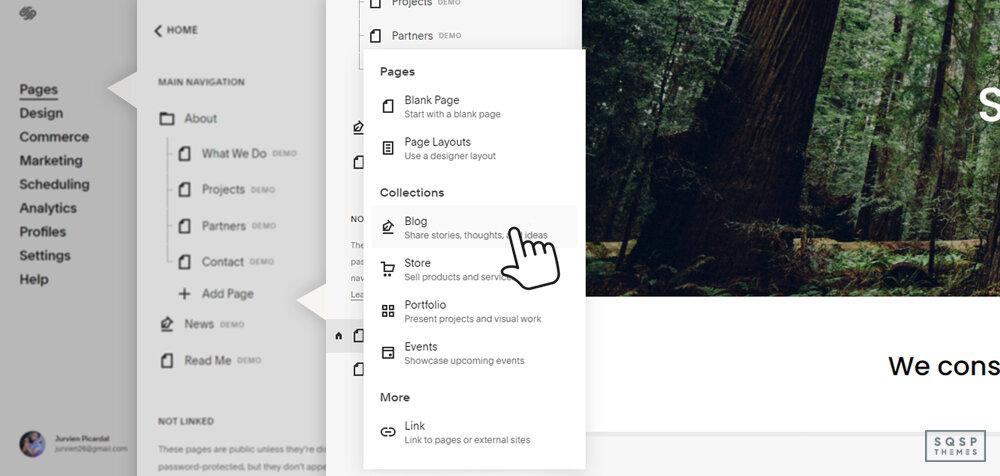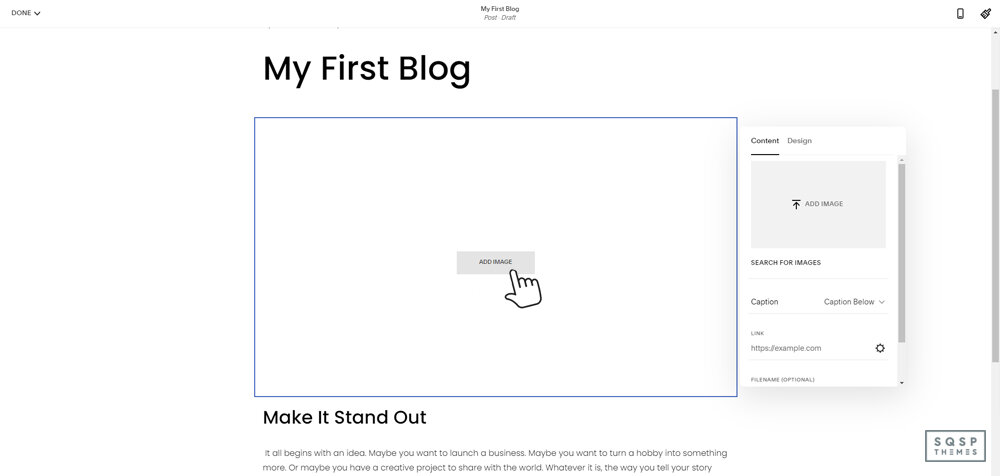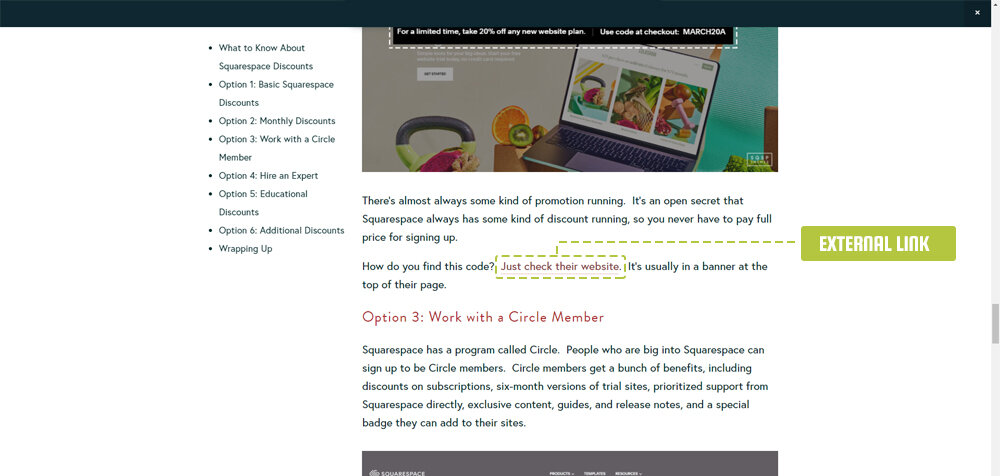The Ultimate Guide to Blogging on a Squarespace Site
Squarespace is an excellent platform for setting up a new website or a new business. It’s also one of the most well-designed website builders when it comes to SEO. But what about one of the most important aspects of running a business; namely, marketing? Specifically, content marketing has become one of the most essential marketing channels for any online business. So, how do you run a blog?
The answer, unfortunately, is long and complex. However, if you break it down into individual elements, you can tackle each in turn and have a functional blog before you know it.
Fair warning: there are plenty of marketers out there who will tell you there is one special thing to focus on and care most about, and that it’s the “True Secret to Successful Content Marketing”, or whatever their sales pitch happens to be. Most of the time, they’re just trying to sell you their service or book. The truth is, you don’t need to optimize those last few milliseconds off your site speed, you don’t need to worry about keyword density, and you don’t need to care about the exact ratio of color contrast on your homepage.
This guide is designed to help you get a blog started while avoiding potential pitfalls along the way. Pick the low-hanging fruit, then go back for another pass to optimize what you didn’t bother with before. You don’t need every element of your blog to be perfect out the gates - even the best blogs in the world aren’t perfect. Google looks at hundreds of factors when evaluating content and they don’t expect every site they see to be perfect, either.
So, what I’ve produced for you here is that guide to getting your blog up and running and optimized so that it will start attracting visitors.
Let’s get started!
Keyword Research and Topic Ideation
The largest battle for blogging success begins before you even add a blog to your site, write your first post, or edit your first image. It’s all about keyword research and topic ideation.
There are hundreds of tools and methods out there for performing keyword research. You don’t necessarily need to use any of them. Google and a spreadsheet are all you need to get started; other programs just allow you to do things faster, with machine learning powering them or large data sets helping you make decisions.
Keyword research isn’t tricky, it’s just tedious, time-consuming, and extremely important to the overall content plan you develop for your blog. Ahrefs, one of the biggest names in link-based marketing online, has an extremely good jargon-free guide you can read here.
What you want to do here is brainstorm some core ideas of what you want to talk about on your blog. It should be relevant to your business, related to the products, or topics you sell or talk about most on your site. There’s a lot of nuance to keyword research, but even thinking about it puts you ahead of most other blogs online.
Once you have your keyword documents ready, you can convert keywords into topics. Think about a keyword; what does someone searching for this want to know? Are they looking for actionable information? Do they want a guide? Are they researching a topic and just want answers? Your job is to figure out what the person searching for that keyword in Google is looking for, and provide that to them. Put yourself in the user’s shoes, and if you write an article for that topic, your plan should be to give the user all of the info they are looking for (and then some).
Competitor Research
One thing that can help with your topic ideation is competitive research. Competitive research is important for a few reasons.
It allows you to find out who out there are your competitors, versus who is too big or too small to be in your scope.
It allows you to find out what topics your competitors are covering, and how.
It allows you to find gaps in coverage where you can slip in and make yourself seen.
It lets you judge content ideas and the realistic expectations you should have.
Don’t be afraid to steal ideas (but not content) from your competitors. If they cover a topic and you disagree with their conclusions, you can write a blog post directly addressing it. If they cover a topic and you think you can do it better, write 10x content for that topic.
HubSpot has an excellent guide on competitor research, and how to do it, found here.
The two main reasons to perform competitor research are to come up with content ideas you might not have thought of before, and to judge whether or not targeting a specific keyword is even feasible. You have to have a very strong value proposition to try to compete against large brands.
Adding a Blog
Now that you’ve laid the groundwork, you can now log into your Squarespace account and set up your blog. You can set up your blog now with a “coming soon” page, or hold off until you have content written that you can publish.
Keep in mind that one of the most important factors in blogging is maintaining a consistent schedule. Setting up a blog, only to leave it empty for weeks or months, isn’t a good look. I generally recommend setting up a backlog of content for several months, but more on that later.
Squarespace makes it easy to set up a blog attached to your site. Here’s a step-by-step process for getting one up and running.
1. Log into your Squarespace account and your site’s dashboard.
2. Click on Pages, and create a new Blog collection page. Squarespace requires you to create this “homepage” for your blog before you can start creating blog posts.
3. Name your blog, and add a link to this collection page in your homepage navigation.
You can then customize your blog settings. Change your URL slug to something human-readable if necessary. Set how many posts you want to be displayed on your blog index page. Write a page description and set a banner, if necessary. I’ll cover a bit of this in the Meta section below.
Now that you have your blog home set up, you can start adding individual posts. You can start from scratch every time, or you can establish a handful of templates, whatever works best in your workflow.
1. On your dashboard, click the + icon to add a new post.
2. Write a title for your post. This should be compelling and include your keyword for the topic.
3. Add and style your text, just like you would on a normal page.
4. Add images. More on that later as well.
5. Publish or schedule your post.
That’s all you need to do for a blog post. It’s pretty easy, and you’ll get the hang of it in just a few iterations. Soon, it will be second nature to you.
One thing to note: I strongly recommend writing your posts somewhere locally or on a cloud-based platform like Google Docs, with an auto-save setup. The number of times I’ve heard people talk about working in their browser, only for the page to refresh and their post to be gone, is incredible. Don’t put yourself at risk; write in a safe environment and copy-paste to Squarespace later.
Installing Plugins
Squarespace by default offers a bunch of useful features for blogging. All Squarespace themes are, by design, mobile-responsive, for example. However, that doesn’t mean it has every feature you might want. That’s where plugins come in. I have a few I recommend, which you can browse here. In particular, you should set up a related posts plugin. This adds a box to your posts that automatically links to other posts you’ve published. This helps keep readers engaged and spending time on your site.
There are plenty of other plugins you can experiment with. They all tend to add or change some elements of your site design. For example, an accordion or gallery format for your blog post index page might work better than your standard blog index. It’s up to you; feel free to browse and decide what you want to use.
Writing Posts
Now let’s take a moment to talk about actually writing posts. Sure, you can just sit down, write a bit about your chosen topic, and call it good, but that’s not going to get you anywhere. You need to hit a few bare minimums and a few key points for your content to be worthwhile enough that Google will rank it.
Hit the right word count. The average blog post for a business blog online is something like 1,250 words. A good blog post is a lot closer to 2,000 words. Where you set your target depends on your overall goals; there are successful blogs that publish 1,500-word content regularly, and there are good blogs that never publish anything under 5,000 words. It’s up to you, but you should strive to be consistent from post to post.
Double- and triple-check your grammar. I recommend writing your content in a format where you can use tools to help out. An office setup like MS Word has built-in grammar checks, plus you can install a Grammarly plugin to get a more robust review. Alternatively, write wherever you like and use online checks like Grammarly to review before publishing. Again, this depends on your workflow. I know some people read every blog post out loud to themselves just to make sure they catch errors they wouldn’t otherwise notice.
Make sure you use keywords in your content. Topic ideation guides the content you create, but keyword research is important for writing. You want to make sure you use your primary keyword, as well as related keywords, in the posts you write. You don’t necessarily have to worry about keyword density or exact match keywords – Google does a lot of Latent Semantic Indexing, which is a fancy way of saying “they understand synonyms and topics without needing specific keywords”. Generally, just make sure you use your primary keyword a few times, and otherwise write naturally about the topic.
Use appropriate formatting. One sad truth is that, despite these 2,000-word blog posts, most people don’t read all of the content on the screen. They skim. Thus, your content is more effective if you make it easier to skim. Break up your content into subheadings, use short paragraphs, use bold/italics/underline for critical information, and so on. You’ll see I have a table of contents on this post where you can jump to individual sections - that’s the whole idea.
Add links. Every blog post should have a mixture of internal and external links. External links are links that point to other websites. Try to add a few of these, to authoritative sources that provide further reading on topics you mention but don’t cover, or data sources you cite.
Internal links are links to your site, anything from other blog posts to product pages or landing pages. Add a few of these to every post.
Pay attention to SEO. This is a tricky one to summarize. There are over 200 different factors that go into SEO, but realistically, you only need to care about a handful of them.
Pick your battles and don’t worry about the factors with low ROI until you’ve hit the major factors.
Optimizing Meta Data
I mentioned this section a couple of times up above, and it’s one of the more important things you can do for SEO. Metadata is the title, excerpt, URL slug, and other “hidden” data that isn’t necessarily on the page but is relevant for Google to know.
Squarespace provides a good rundown of the different types of metadata here. Apply the core tenets of SEO – using keywords, keeping within character limits, being useful – to these fields.
Sourcing and Using Images
Blog posts need images these days. Images are a tricky topic, because there’s a lot of misconceptions about them, and worse, a lot of misinformation.
Essentially, every image needs to be something you have permission to use. This means:
You took the image yourself or created it from scratch.
The image is licensed for free use under the Creative Commons.
The image is licensed for your use after you pay for it.
Copyright violations are a very big deal, so make sure you’re sourcing your images properly. Google has a creative commons filter on their image search, there are dozens of stock photo websites, and you can always just pull out a camera or hire a graphic designer.
Additionally, images have SEO elements you need to optimize. In particular, there are two:
Smush down the image. Compress both the dimensions and the file size so that the image loads quickly.
Add alt/description text. This is important for Google indexing and accessibility.
Do this for every image you add to your posts.
Wrapping Up
Keep in mind that everything I’ve written above is just the bare-bones basics of running a blog. It’s enough to get you up and running, but it’s probably not enough to get you ranking top of your industry.
That’s a long journey, and while I’m happy to help, you can also hire an expert. Take your time, don’t try to optimize every single detail, and don’t stress the small stuff. Establish habits and patterns of producing content first, and then worry about optimizing the minor details.
Did I leave anything out? Do you have any questions for me about blogging or Squarespace? Give me a shout in the comments below and I’ll reply back shortly!
























